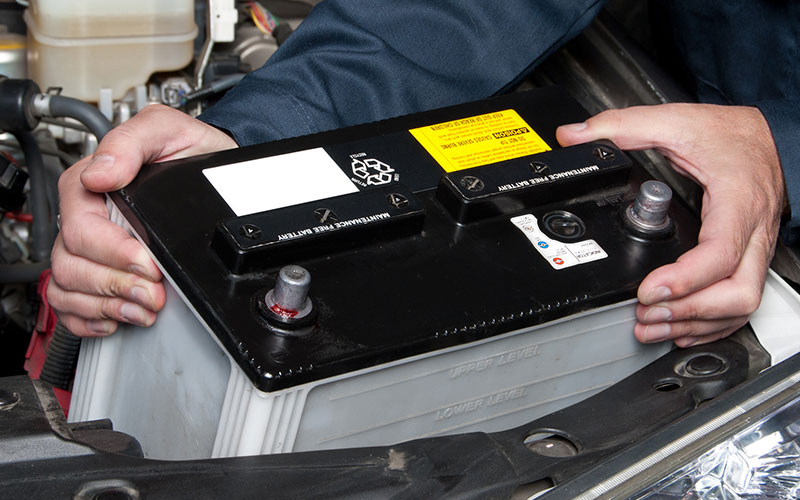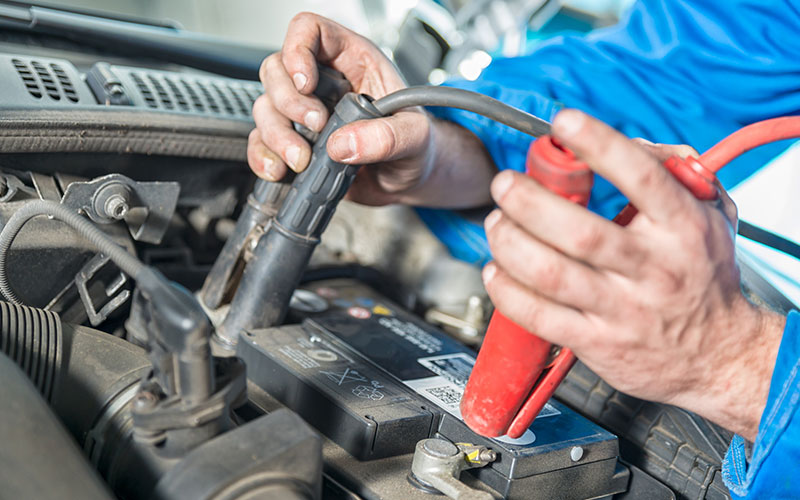Since luck favors the prepared, we’re going to give you a list of common problems and diagnoses to lower your anxiety when your car won’t start.
6 Reasons Why Your Car Won’t Start

When you turn the key on your old Toyota Camry or push the button on your new Dodge Charger and nothing happens, that sound of silence is deafening. A flock of birds suddenly flies off from the branches of a tree, and you’re faced with one of life’s mysteries: Why won’t my car start?
Since luck favors the prepared, we’re going to give you a list of common problems and diagnosis meant to lower your anxiety level and possibly speed up your rush to the next appointment. Here are some possible reasons and solutions to why your car won’t start.
Your Transmission is in Drive or Reverse

It’s a little like checking to see if your computer is plugged in, but this is more common than you think. While distracted, it’s easy to park the car, hit the emergency brake, turn the ignition off and not shift the transmission to “P.” When you come back to start the car, the normal lights are on the dash, but nothing is happening. With many shifters on a center console, you’ll need to look down and check its location. Turn the ignition off, move the transmission to “P,” put your foot on the brake and crank it back up. Everything should be ready to go.
You Have a Dead Battery

A battery that’s no longer holding a charge is the most common reason for an unresponsive engine. With newer batteries, you’ll often not even get a warning something is wrong. Without a working battery, the electrical components won’t have the power to make your car run. In general, an alternator charges the vehicle battery while the car is running. Alternatively, if the alternator fails, the battery isn’t charged, and you’ll run into problems.
A battery will die for other common reasons such as:
- Headlights or map lights were left on
- The battery is at the end of its expected life (often 5 years)
- Water in one or more of the battery’s cells has evaporated

If the battery light is lit on your dashboard, the map lights won’t stay on when you crank the engine, or the engine barely turns over, you may need a new battery. Seriously consider jump-starting your battery with a help of a friend and make your way to a parts store or automotive dealer. You can then have the battery tested to determine what may be wrong with the charging system and have it serviced or replaced.
The Key Fob Doesn’t Work

Depending on your car’s make and age, you may have a keyless entry system with a key fob. If the battery is dead or low in charge, you’ll not be able to start the car manually or remotely. Most of the key fobs have a key embedded in the fob so that you can use it as a regular key for both the doors and the ignition. You’ll need to read your owner’s manual on how to start the car or resync the fob with your vehicle in some models after having lost power from the battery.
Your Ignition System is Defective

Let’s assume you know the battery is fine and you’re still having issues. In this case, your engine may turn over a few times, and nothing happens. If your headlights work fine, the map lights stay on, and your radio works, then you may have a problem with the ignition switch. For this one you’ll need some “can do” spirit and read the manual to do it yourself or find the closest mechanic with the help of a tow.
Your Fuel Filter is Clogged

It would be best if you changed fuel filters every two years or 30,000 miles. If you can’t remember when you last changed the filter and it’s been over 30,000 miles, it may be clogged and in need of maintenance. A clogged fuel filter won’t allow the needed amount of gas to reach the engine. There’s no time like the present to have the fuel filter replaced.
Your Gas Tank is Empty

Another common problem is forgetting to put gas in your car. Many cars will tell you how many miles there are until empty, but they’re not always correct. And as silly as you may feel running out of gas, it’s easy to accidently do in our busy world. If stranded in most areas of the country, you can look on the back of your driver’s license and find a local help number to call. The highway and transportation authority will be happy to give you enough gas to make it to the next station. If you’re just in town, just hitch a ride from a friend and get some gas at a nearby station.
Sometime Down the Road

If you drive cars long enough, you’ll encounter at least one of these issues, but don’t despair because it could be an easy fix. If you need automotive assistance, help is just a phone call away from your local service technician, auto club, friend, or highway authority. Now you have some information to help you on your way and can hopefully diagnose your situation properly.
Just remember, performing regular maintenance on your automobile can keep most of these problems from becoming your own. With preventative maintenance, you can hear your engine start-up every morning and get a stress-free beginning to your day.









